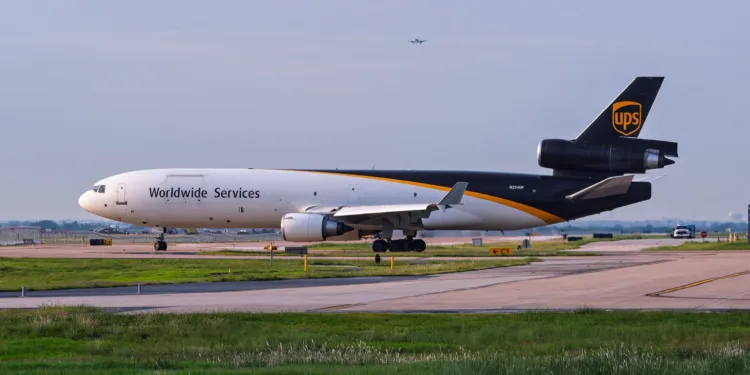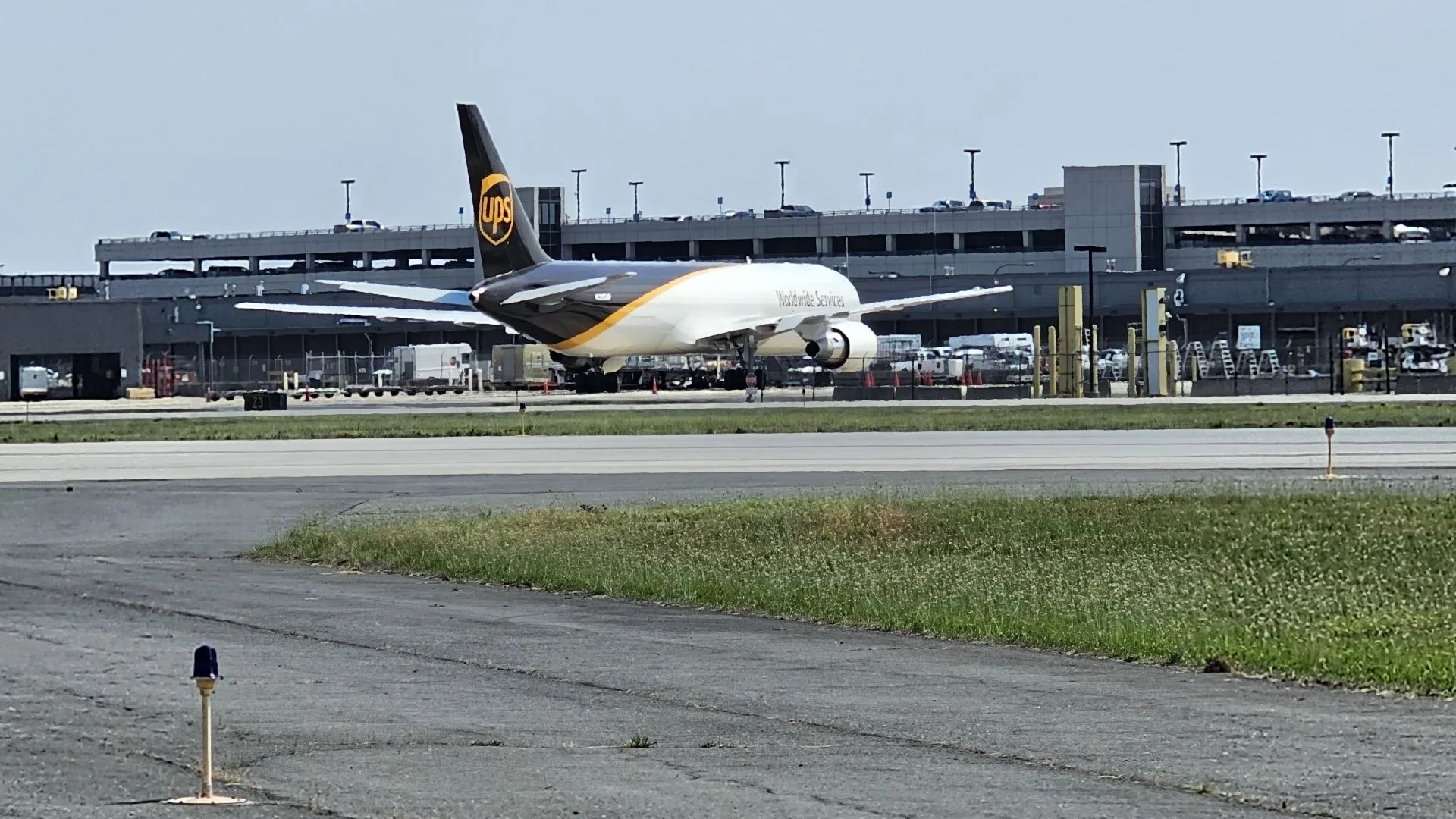UPS and FedEx have grounded their MD-11 widebody cargo jets as a precautionary measure following the deadly crash of one of the planes as it departed the UPS global air hub in Louisville, Kentucky, on Tuesday.
UPS (NYSE: UPS) expects the flight stoppage to be temporary, spokesman Jim Mayer told FreightWaves.
Both carriers said late Friday they were following the recommendation of aircraft manufacturer Boeing. The MD-11 was designed and built by McDonnell Douglas Corp., which was acquired by Boeing in 1997. Boeing stopped production in 2000 to focus on its 767 and 777 freighter programs.
“We recommended to the three operators of the MD-11 freighter that they suspend flight operations while additional engineering analysis is performed. This recommendation was made in an abundance of caution and we will continue coordinating with the FAA on this matter,” Boeing said in a statement. A Boeing technical team is supporting the National Transportation Safety Board’s investigation of the accident.
There are about 70 MD-11 freighters currently in service. UPS operates 27 of the tri-engine aircraft. FedEx (NYSE: FDX) operates 28 MD-11s. Western Global, a Florida-based carrier that has struggled financially for several years, has 12 MD-11 aircraft on its operating certificate, but only six of them are currently operating, according to aircraft tracking site Flightradar24. The rest of Western Global’s MD-11 fleet has been inoperative for 90 days or more.
“Out of an abundance of caution and in the interest of safety, we have made the decision to temporarily ground our MD-11 fleet. MD-11s are approximately 9% of the UPS Airlines fleet. The grounding is effective immediately. We made this decision proactively at the recommendation of the aircraft manufacturer. Nothing is more important to us than the safety of our employees and the communities we serve,” UPS said in a statement.
In February 2023, UPS began a planned retirement of aging MD-11 freighters with the goal of replacing them with more fuel-efficient aircraft and reducing excess capacity at a time when airfreight and parcel volumes were falling or growing much slower. UPS said then that the MD-11s will be replaced by 28 factory-built 767-300 cargo jets from Boeing. The airline owned and operated 38 MD-11s at the end of 2023, according to its annual report.
“Safety is our highest priority at FedEx. Out of an abundance of caution, we have made the decision to immediately ground our MD-11 fleet as we conduct a thorough safety review based on the recommendation of the manufacturer,” FedEx said in a statement. The MD-11 represents about 9% of FedEx’s mainline fleet of 387 aircraft. FedEx counts 703 in its total fleet, but the balance are small turboprop aircraft operated by partner carriers on feeder routes to larger FedEx stations.
FedEx in May said it would delay final retirement of the tri-engine MD-11 fleet from 2028 until 2032 in response to rising demand for international nonparcel freight service. In fiscal year 2024, FedEx retired nine MD-11s.
FedEx figures at the end of August showed 34 MD-11s in the fleet. The company didn’t respond to queries seeking an explanation for the exit of six aircraft from the fleet in the past two months. In the first half of 2024, FedEx operated 37 MD-11s.
Both companies said they are implementing contingency plans to make up for the lost capacity and minimize potential service disruption for parcel and freight customers.
The two airlines also have to contend with a potential capacity constraint from the Federal Aviation Administration’s mandate to trim 10% of flight activity at the 40 busiest airports by Friday. Passenger airlines on Friday canceled hundreds of flights. But express package carriers aren’t expected to be heavily impacted because the vast majority of their flight operations take place between 10 p.m. and 6 a.m., when the FAA restrictions don’t apply. Airlines are also not required to cut back international flights, which represent a large chunk of UPS and FedEx activity.
The MD-11 has a maximum payload of more than 207,000 pounds, with space for 26 containers on the main deck and 13 in the lower hold. The B767 is smaller, with a 132,000-pound payload capability and room for 24 large containers and seven lower-deck shipping units. It also has a shorter range.
The left engine on Flight 2976 separated from the wing during takeoff Tuesday afternoon, according to video footage and the NTSB, dooming the aircraft’s ability to gain altitude. It crashed into an industrial park just past the airport fenceline. Fourteen people were killed in the accident, including the three pilots, according to authorities.
“We are deeply saddened by the tragic accident involving UPS Flight 2976 near Louisville. Our thoughts are with the families, crew members, and everyone across the UPS and Louisville communities affected by this devastating loss,” FedEx said in a statement of solidarity earlier this week. “The entire FedEx team stands with our colleagues across the aviation industry during this difficult time.”
Click here for more FreightWaves/American Shipper stories by Eric Kulisch.
RELATED STORIES:
UPS begins phaseout of older MD-11 cargo jets
Cargo airlines, shippers face mixed impact from FAA flight restrictions
UPS restarts Louisville air hub operations for Thursday deliveries
NTSB crash investigators try to minimize disruptions for UPS customers
The post UPS and FedEx halt MD-11 flying to conduct safety review appeared first on FreightWaves.





















